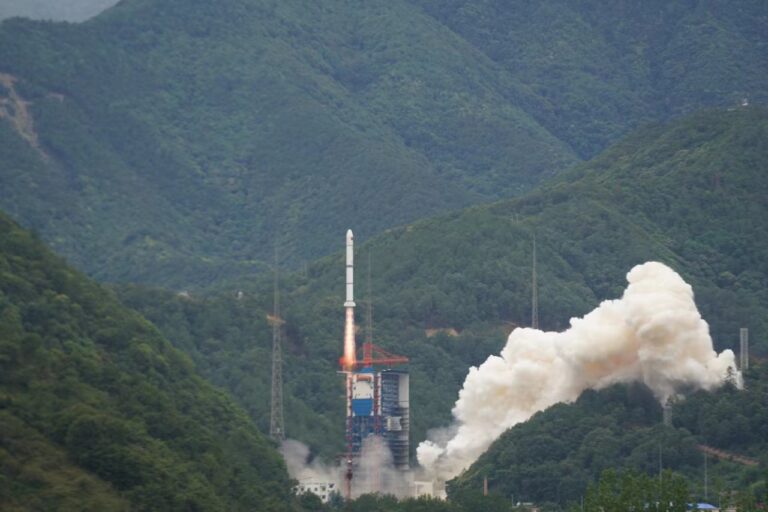HAUSJARVI, Finland — Toxic rocket debris fell in a populated area early Saturday morning during the launch of SVOM, a joint Chinese-French space probe investigating gamma ray bursts.
The Long March 2C rocket launched from the Xichang Satellite Launch Center at 3:00 a.m. Eastern Time (7:00 a.m. UTC) on June 22, placing the Space Variable Object Monitoring (SVOM) mission satellite into orbit.
The China Aerospace Science and Technology Corporation (CASC) declared the launch a success shortly after it was launched.
A gamma-ray burst (GRB) is an intense electromagnetic explosion that releases as much energy in a few seconds as the Sun releases in its 10 billion year lifespan.
SVOM is a joint project between the China National Space Administration (CNSA) and France’s National Centre for Space Studies (CNES).
The mission will look for high-energy electromagnetic radiation from these events in the X-ray and gamma-ray ranges using two French and Chinese developed scientific payloads, including the Microchannel X-ray Telescope (MXT), a lobster eye X-ray focusing telescope optimized for a narrow field of view.
GRBs are thought to be caused by the death of massive stars or collisions between stars, and study of them may provide answers to important questions in astrophysics, including the death of stars and the creation of black holes.
But the launch of SVOM has created its own explosion in the country.
A video posted on the Chinese social media site Sina Weibo showed the rocket booster falling in a populated area, causing people to flee in panic.
According to another post, the booster fell near Guiding County, Qiandongnan Prefecture, Guizhou Province. An airspace closure notice for the mission established a temporary danger zone that included Guiding County, Guizhou Province.
Many of the comments on the video pointed out the dangers posed by the Long March rocket’s hypergolic propellant. Some comments on the post suggested the incident was related to SpaceX’s failed Starship recovery, while others suggested an American conspiracy.
The Long March 2C uses a toxic hypergolic mixture of nitrogen tetroxide and unsymmetrical dimethylhydrazine (UDMH). Reddish-brown gas or smoke coming from the booster could be a sign of nitrogen tetroxide, while yellowish gas could be from hydrazine fuel mixing with air.
Contact with leftover fuel or oxidizer from rocket stages can be extremely harmful to humans.
Rocket debris is a common problem during launches from China’s three inland launch sites.
China’s first three launch sites were established during the Cold War, with inland sites chosen as a way to strengthen defenses amid tensions with the United States and the Soviet Union.
Authorities are expected to issue warnings and evacuation notices in areas deemed at risk from launch debris to reduce the risk of injury.
The SVOM launch was China’s 29th this year. The China Space Agency (CASC) said China aims to carry out around 100 launches in 2024, including about 30 commercial missions.

